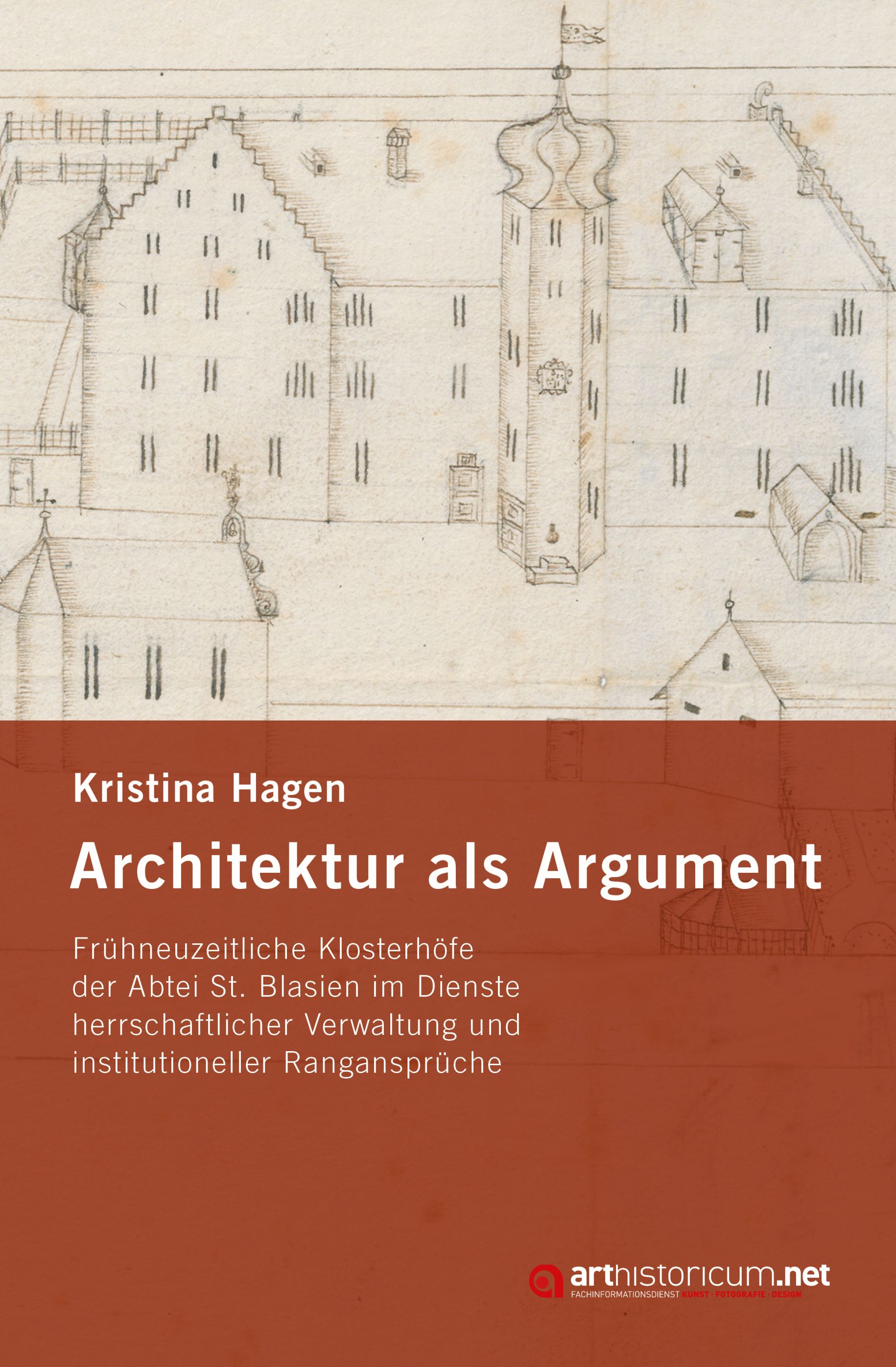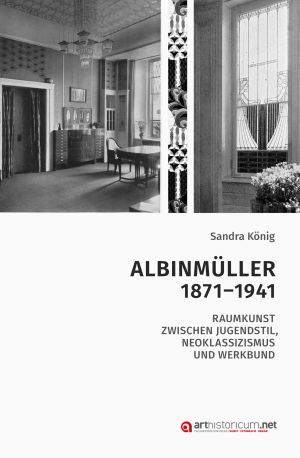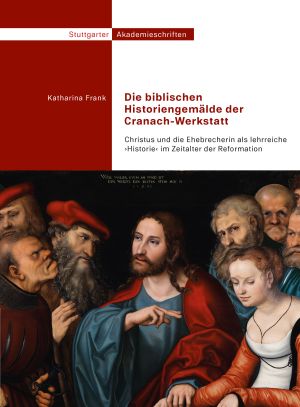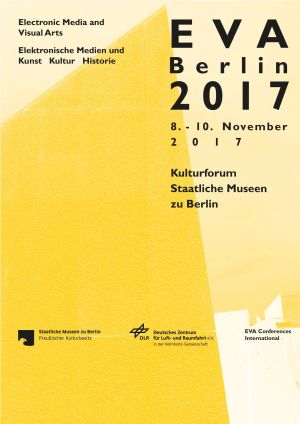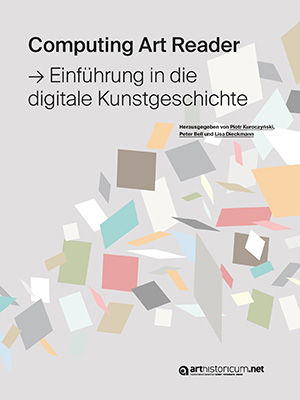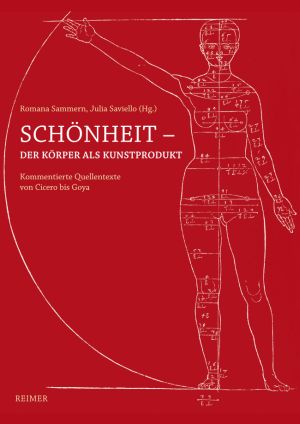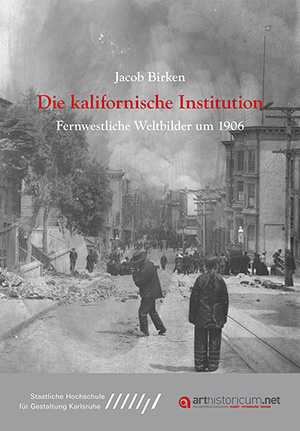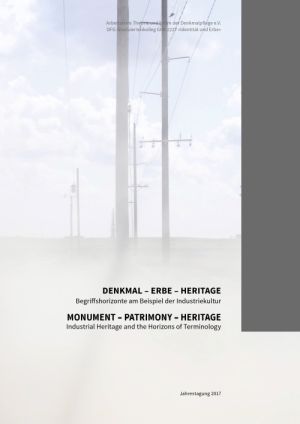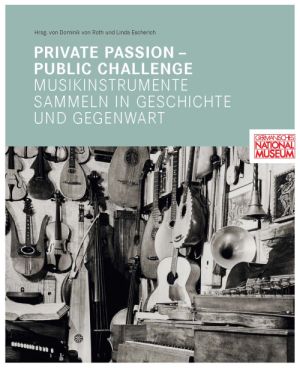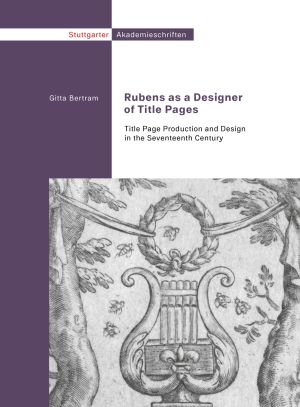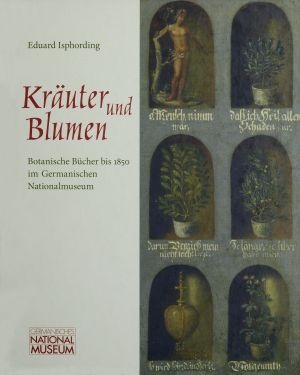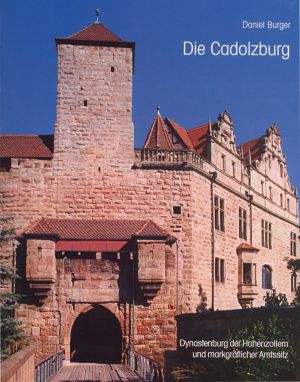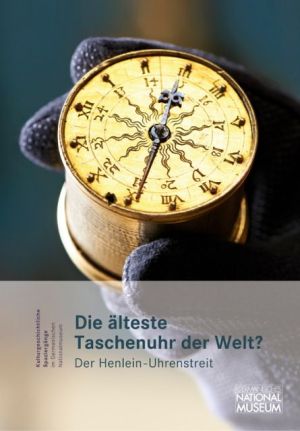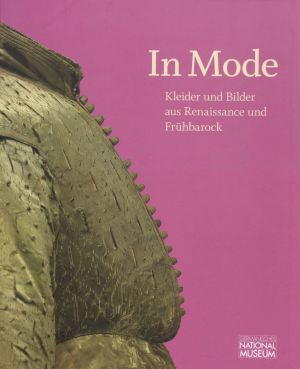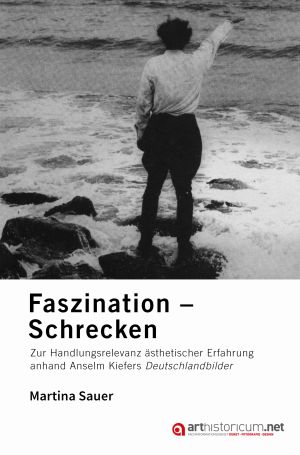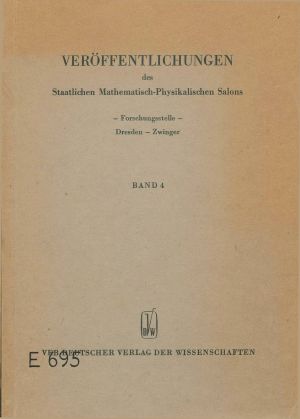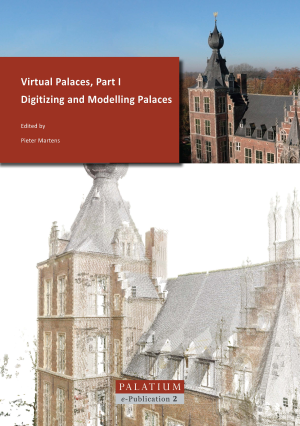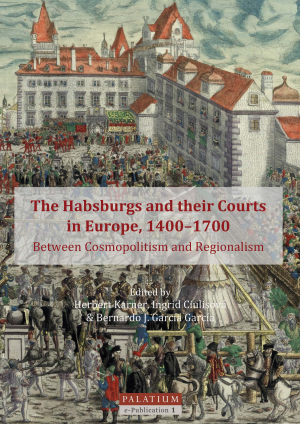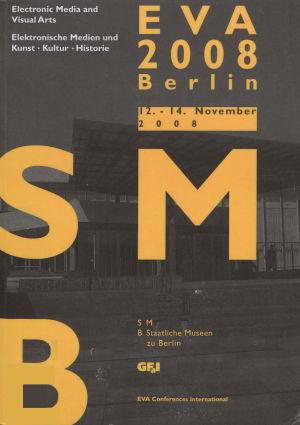Books
Architektur als Argument: Frühneuzeitliche Klosterhöfe der Abtei St. Blasien im Dienste herrschaftlicher Verwaltung und institutioneller Rangansprüche
Monastic manor houses of the 16th-18th century served as administrative centres of Further Austrian Saint Blaise Abbey’s large and remote holdings: In townhouses, rural administrative buildings and provosts, levies – natural produces and money – were collected, stored, sold or redistributed. There was room for public gatherings as well as administrators, visiting abbots, convent’s members and guests. The buildings thus had to fulfill not only very practical tasks but also representative demands.
This study pays special attention to the buildings’ function, their contribution to the territory’s definition, and the question to what extent form and style were used as a rhetorical device to communicate the principal’s social position and rank to the viewer.
Comparisons with contemporary manor houses of Säckingen ladies’ chapter and of secular lords of Schönau complete the investigation.
Albinmüller 1871–1941: Raumkunst zwischen Jugendstil, Neoklassizismus und Werkbund
Albinmüller (d. i . Albin Müller, 1871–1941), Mitglied des Deutschen Werkbunds und der Darmstädter Künstlerkolonie, entwarf eine Vielzahl an Raumausstattungen sowie Gebrauchs- und Ziergeräten, welche hier erstmals übergreifend in ihrer Gesamtheit betrachtet werden. Ebenso wird die Lehrtätigkeit an der Magdeburger Kunstgewerbeschule (1900–1906) und den Großherzoglichen Lehrateliers in Darmstadt (1907–1911) behandelt. Albinmüller war überzeugt, dass eine moderne, zeitgemäße Formgebung „ohne Zutat überlieferter Formen“ möglich sei. Seine Entwürfe wurden u. a. auf den Weltausstel-lungen in St. Louis 1904 und Brüssel 1910 sowie der III. Deutschen Kunstgewerbe-Ausstellung in Dresden 1906 prämiert.
Die biblischen Historiengemälde der Cranach-Werkstatt: Christus und die Ehebrecherin als lehrreiche ›Historie‹ im Zeitalter der Reformation
The biblical story about Christ and the adulteress is among the most often religious picture themes of Lucas Cranach the Elder and his sons. From the 1530s onwards, the biblical ›historia‹ from the Gospel of John was painted in numerous versions by the Cranach-workshop. Their rhetorical visual language teaches, delights and moves the viewer.
The media-historical study focusses on visual culture in the Reformation period. The history paintings are not only a manifestation of Martin Luther’s teaching of divine grace. They also serve as visual mirror of prince’s virtues and ›exempla‹ of mild and wise judgement – further they invite Christian believers to inner contemplation.
Konferenzband EVA Berlin 2017. Elektronische Medien & Kunst, Kultur und Historie: 24. Berliner Veranstaltung der internationalen EVA-Serie Electronic Media and Visual Arts
The digital transformation of cultural heritage is a generative and co-creative process. It has long ceased to be the reproductive digitization of collection objects, but rather the imprinting of authentic experience equivalents. Telepresence technologies and three-dimensional visualizations enable a virtual re-enactment of the collections in documentation and mediation. Not as a digital twin, but as a documentary and functional enriched digital unicum, the object leaves the museum space and unfolds its own virtual, smart and shared heritage its own, auratic effectiveness in the Internet of Things, in social networks, on gaming platforms or in research and science. In addition to broader access to cultural heritage, new forms of circulation of knowledge and the differentiation of public media environments are on the digital agenda of the GLAM institutions.
The 24th Berlin EVA Conference 2017 is the forum where these topics are developed - at the interface between memory institutions, technology developers, information scientists and public administrations.
Computing Art Reader: Einführung in die digitale Kunstgeschichte
Der Arbeitskreis Digitale Kunstgeschichte versteht sich als Netzwerk, das digitale Methoden im Fach Kunstgeschichte stärkt und gleichsam bildwissenschaftliche Forschung weitreichender in den Digital Humanities etabliert. Dazu richtet sich das Engagement des Arbeitskreises und seiner Mitglieder nicht nur auf die Weiterentwicklung digitaler Infrastrukturen und Werkzeuge, sondern auch auf die methodenkritische Vermittlung vielfältiger Ansätze digitaler Kunstgeschichte in der Lehre.
Der Computing Art Reader — Einführung in die digitale Kunstgeschichte stellt einen Schritt zur Umsetzung dieser Aufgaben dar. Studierende und Lehrende der Kunstgeschichte und der Digital Humanities erhalten einen ersten Überblick über die verschiedenen Inhalte und Institutionen der digitalen Kunstgeschichte; festgehalten durch einige der Akteurinnen und Akteure selbst. Die Texte bilden ein Mosaik aus theoretischen Essays, praxisnahen Projektbeschreibungen, Überblicken über Forschungszweige und kontroversen Positionstexten, in denen konkrete Technologien, aktuelle Diskurse und zukünftige Ziele des Teilgebiets ersichtlich werden.
Schönheit ― Der Körper als Kunstprodukt: Kommentierte Quellentexte von Cicero bis Goya
Spätestens seit der berühmten Anekdote vom Bild der schönen Helena gilt körperliche Schönheit als ein Kunstprodukt. Für sein Bildnis der Helena soll der griechische Maler Zeuxis die fünf hervorragendsten Jungfrauen ausgewählt und von jedem Modell den jeweils schönsten Körperteil gemalt haben.
Nach dieser Vorstellung ist vollkommene Schönheit erst durch einen künstlichen Eingriff zu erzielen; das gilt sowohl für den lebendigen Körper als auch für sein künstlerisches Abbild. Kunst und Körperpflege stehen damit in einem spannungsvollen Wechselverhältnis. Denn die Grundlagen und Mittel zur Erzeugung und Steigerung von körperlicher Schönheit, die in beiden Bereichen zur Verfügung stehen, über- schneiden, ergänzen und beeinflussen sich. Das Buch beleuchtet dieses Wechselverhältnis anhand ausgewählter Grundlagentexte in deutscher Übersetzung, ergänzt um fundierte Kommentare zum historischen Kontext.
Kulturreformer. Rassenideologe. Hochschuldirektor: Der lange Schatten des Paul Schultze-Naumburg
Being a co-founder of important institutions like the Werkbund and the Deutscher Bund Heimatschutz, Paul Schultze-Naumburg (1869-1949) belongs to the most important representatives of German cultural history of the early 20th century. After the First World War, though, the painter, author, entrepreneur, architect and politician radicalised himself developing an increasingly racist attitude and joining the NSDAP at an early stage.
From 1930 to 1940 Paul Schultze-Naumburg directed the “Staatliche Hochschulen für Baukunst, bildende Künste und Handwerk“ in Weimar. In his attempt to align the former Bauhaus with the new rulers' ideology, he developed an explicitly anti-modern didactic concept which focused on glorifying the tradition of german craftsmanship.
This volume takes a closer look at Paul Schultze-Naumburgs life and work as well as at the profile the Hochschule Weimar was given under his directorship. Further, the impact of this contradictory, difficult personality are discussed. The book presents the results of a scientific symposium, organized by the Bauhaus-Institut für Geschichte und Theorie der Architektur und Planung which was held at the Bauhaus-Universität Weimar on December 3rd & 4th, 2015.
Die kalifornische Institution: Fernwestliche Weltbilder um 1906
In April 1906, Arnold Genthe takes a series of photographs of a San Francisco ravaged by earthquake and fires. While his images remain ubiquitous documents of this disaster, Genthe himself is all but forgotten today, the dreamlike, blurry portraits and expressionist dancers that make up most of this once-famous artist’s oeuvre having no place in the canon established by later avant-garde photographers. This book takes Genthe’s most popular images of the 1906 disaster as the starting point for a discussion of the aesthetic, epistemological and sociopolitical conflicts that shaped the various world-views in the Far West at the turn of the century.
Denkmal – Erbe – Heritage: Begriffshorizonte am Beispiel der Industriekultur
This Volume offers two languages (german/english)
If “Sharing Heritage” is to be taken seriously, then it must have consequences for the assessment of value – in Europe, but also beyond: in place of the more exclusionary “World Heritage”, which tends to foreground each country's own, often nationally-defined achievements and merits, we should strive toward the creation of a “Global Heritage,” one capable of building bridges on the basis of universal values, thereby bringing the world’s people closer together as a global community with a common destiny.
The 2017 Annual Meeting of the Working Group on Theory and Education in Heritage Conservation on the topic “Monument – Patrimony – Heritage” at the TU Berlin was at the same time the first Annual Meeting of the Research Training Group 2227 “Identity and Heritage” (GRK 2227), funded by the DFG. A cooperation between the two was particularly opportune, as the Working Group had decided on Berlin as the location of the annual meeting and, in view of the motto “Sharing Heritage” of the European Cultural Heritage Year 2018, to dedicate it to a discussion of monument and heritage terminology, while the Research Training Group, with seats in Berlin and Weimar, had been launched to address such questions and a number of colleagues are active in both bodies.
Private Passion – Public Challenge: Musikinstrumente sammeln in Geschichte und Gegenwart
Whereas the enthusiasm of private individuals for collecting musical instruments remains undiminished, public museums are too often restricted in their desire to augment their collections by lack of storage space and money.
When the Rück Collection was sold to the Germanisches Nationalmuseum at the beginning of the 1960s, it was the last sizeable collection of musical instruments within Germany to pass from private to public ownership. In keeping with Rück’s example, private collecting of musical instruments forms the central theme of the conference, with contributions on historical and contemporary collections from all over Europe. In addition such topics as the function of musicology and related themes, such as the display of public collections are being addressed and complemented by the experiences of private collectors. Positions from the fields of literary studies, cultural management, transcultural music studies, and art history provide cross-disciplinary correctives and complete the conference proceedings.
The Interior as an Embodiment of Power: The Image of the Princely Patron and its Spatial Setting (1400-1700)
This volume is dedicated to the study of the in- and outside of princely residences and of their setup as the stage for a developing European early modern court culture. At a time of increasing aristocratization (1400-1700) and with many new nascent princely courts, both the princely person and the performance of princely power required an appropriate type of elaborate backdrop as its setting. Even though such an interest in the palace interior and its functions is not entirely new, interior architecture and court culture have only recently come to be seen as two sides of the same medal: embodiment and expression of the princely presence.
Therefore, the essays included focus in particular on diverse types of functions that palaces and apartments, state rooms and privy chambers had to fulfil at certain periods and in certain residential contexts between the ages of feudalism and absolutism at courts in London, Edinburgh, Neuburg am Inn, Karlstein and Prague, Červený Kameň and Ludwigsburg. They compare and contrast specific local examples with international trends such as, for example, the palace and court ceremonial developed at or adapted to diverse circumstances in Burgundy, Spain or Lithuania. Consequently, the aim of this volume consists of the combination of personal and dynastic ambitions with fashionable trends and court etiquette followed by royalty and minor princes alike during a period of calculated magnificence. It considers processional routes towards the presence of the ruler or towards its image. Thereby, it helps to define the complementary roles of residential interiors and of the courtly personnel at the same time.
The ten papers collected in this volume were first presented at the PALATIUM colloquium The Interior as an Embodiment of Power―The Image of the Prince and its Spatial Setting (1400–1700), organized by Stephan Hoppe, Krista De Jonge and Stefan Breitling and held in Bamberg in October 2013.
Looking for Leisure: Court Residences and their Satellites 1400–1700
This volume focuses on the leisure buildings – often called casino, palazotto or Lusthaus – which formed an integral part of princely residential complexes in Europe in the period 1400–1700. The aim of this collection is to study these satellite buildings as counterparts to the main palaces. The relatively small size of these structures belies their importance. They took on representative roles and developed certain ideological programmes that would have been difficult to achieve in the larger residential buildings.
Many of these buildings were meant only for seasonal use. Their primary role was as a place of rest, leisure and repose. This relaxation could either take a contemplative form or could include such vigorous activities as hunting, sports and various court festivities. The case studies presented here illustrate the shared principles of these recreational buildings and investigate how their architects and patrons attempted to realize a ‘paradise on earth’ and managed to bring the human world into harmony with the natural world.
Discussing examples from all over Europe – from Central Europe via Italy and France to Denmark and Scotland – the seventeen papers gathered in this volume address four different aspects of ‘palazotto culture’: the terminology that was used to identify these small palaces, which reflects the wide variety of needs they fulfilled; the functions and typologies of these buildings; their artistic decorations; and their gardens and natural surroundings.
Peter Paul Rubens as a Designer of Title Pages: Title Page Production and Design in the Beginning of the Seventeenth Century
This socio- and media-historical research on Peter Paul Rubens's title page design shows that he consciously developed its traditions. In collaboration with engravers and publishers, Rubens created 48 visual and intellectual masterpieces for a great variety of books which belonged in every seventeenth-century library of rank. His designs were not only advertisements for these works, but also for their authors and publishers, often Balthasar Moretus. Rubens's title pages were repeatedly copied, and their wide distribution contributed immensely to Rubens's fame as a learned artist, antiquarian, humanist and Catholic.
Kräuter und Blumen: Botanische Bücher bis 1850 im Germanischen Nationalmuseum
The catalogue is dedicated to an important part – both in quantity and in quality – of the museum library’s collection: the botanical-pharmaceutical books. A foray into the history of botanical literature and illustration portrays the exploration of the flora, from its beginnings in antiquity until the 19th century and its reflections in often gloriously illustrated books. The catalogue of around 330 botanical books from five centuries offers information on distinctive technical details on each book, as well as short texts on content, authors and illustrations. Several cross-reverences between historical forays and individual descriptions illustrate the comprehensiveness of the collection. An author index and an index of persons as well as an extensive bibliography offer further guidance. The book provides an insight into current botanical views: the perspectives of science, especially pharmaceutics, agriculture – and garden lovers.
Die Cadolzburg: Dynastenburg der Hohenzollern und markgräflicher Amtssitz
The Cadolzburg was an important administrative centre of the house of Hohenzollern in Franconia and ranked among the best-preserved castles in Germany until its devastating destruction during the Second World War. The Germanische Nationalmuseum (GNM) was involved in deciding how to make use of the Cadolzburg after the war, and assigned Daniel Burger to create a concept for a German Castle Museum on that location. This monograph is a result of this project. It contains the current state of research on the castle, a historical summary, an analytical building specification, followed by a description of the Cadolzburg in the context of other Hohenzollern castles in Franconia. Topics covered include stonemason’s marks, the fortifications of the market Cadolzburg, and torture in the castle; finally, a list of officials, inventories, and a register of persons and locations associated with the Cadolzburg.
Die älteste Taschenuhr der Welt? Der Henlein-Uhrenstreit
Kulturgeschichtliche Spaziergänge im Germanischen Nationalmuseum, Band 16
500 years ago Peter Henlein, a locksmith from Nuremberg, was among the first to create small-scale portable clocks. His contemporaries already praised him for this masterly performance. But do original "Henlein pocket watches" still exist? If so, how can they be identified? Collectors and specialists in museums have been concerned with this issue for a long time now, up to the discussion which clock could and should receive the title of the "World's Oldest Pocket Watch".
The accompanying volume to the exhibition is part of the series "Kulturgeschichtliche Spaziergänge im GNM" ["Cultural Strolls in the GNM"] and presents the most recent scientific findings on the "Henlein pocket watch" in a larger historical context.
In Mode: Kleider und Bilder aus Renaissance und Frühbarock
Accompanying the exhibition in the Germanisches Nationalmuseum from 3 December 2015 until 6 March 2016 the volume features 50 costumes from the museum's collection dated between 1560 and 1650 that - along with international loans - were shown in this special exhibition for the first time. They are presented in the context of contemporary paintings and graphic art works that depict the original effect of the clothes and the way they were worn, in this way indicating a person's social status. Illustrated leaflets included in the volume furthermore show critical views on fashion that were spread at the same time. The exhibition volume also features rare pieces of everyday clothing from the 16th and 17th centuries, including the finds from a tailor's workshop in Bremen, as well as of working equipment such as needles, scissors, thimbles or clothes brushes. The section "Focus on Restauration" concentrates on the elaborate forms of production and conservatory work using the example of chosen exhibits. The appendix lists materials of and techniques relevant to the garments. The catalogue, finally, features close ups of forms, materials and decor of early modern clothing, thus making the forgotten messages engrained in the garments visible to observers and readers today.
Faszination - Schrecken: Action Theory of Aesthetic Experience Based on Anselm Kiefer's "Images of Germany"
2nd Edition
How do we perceive the world and pictures? The book is based around the hypothesis that we initially perceive the world as well as pictures by feelings and that there is a direct connection between the two. By debating fascination and horror, such as can be triggered by Anselm Kiefer´s Deutschlandbilder, the author discusses their consequences and conclusions for our cultural self-perception. The author develops a comprehensive theory on image and culture which is new in this field of research and also includes the special status of the art.
Das Dresdner "Quadratum geometricum" aus dem Jahre 1569 von Christoph Schißler d. Ä., Augsburg
Nach einem jahrhundertelangen Bestehen tritt jetzt der Staatliche Mathematisch-Physikalische Salon mit einer eigenen Schriftenreihe an die Öffentlichkeit. In diesen neu herausgegebenen Bänden, die nunmehr periodisch erscheinen werden, sollen hauptsächlich die fachlichwissenschaftlichen Arbeiten Aufnahme finden, deren Inhalt mit den vielseitigen Sammelgebieten des Museums und Forschungsinstitutes wissenschaftlich und museumstechnisch in engem Zusammenhang stehen. Seit der um 1728 erfolgten Ausgliederung des „Physikalischen Cabinetts" aus der Dresdner Kunstkammer hat sich der Mathematisch-Physikalische Salon zu einem der bekanntesten und berühmtesten Museen naturwissenschaftlicher Instrumente, Apparate und Kunstgegenstände entwickeln können. Nach einer fast restlosen Zerstörung der Arbeits- und Sammlungsräume im Februar 1945 konnte das Institut bereits im Sommer 1952 mit einer Teilausstellung in seinem wiederaufgebauten früheren einzigen Ausstellungspavillon unter Teilnahme des In- und Auslandes an die Öffentlichkeit treten. Weitere Sammlungsräume — wie der ehemalige Grottensaal und die lange Bogengalerie — konnten 1954 und 1956 mit der fortschreitenden Restaurierung des Dresdner Zwingers übernommen und als neue Museumssäle den Besuchern übergeben werden. […]" (Vorwort)
Die ersten Forschungsergebnisse der Globusinventarisierung in der Deutschen Demokratischen Republik
„Bereits 1961 konnte der erste Band einer neuen eigenen Schriftenreihe des Staatlichen Mathematisch Physikalischen Salons der Fachwelt des In- und Auslandes vorgelegt werden. In zahlreichen Zuschriften maßgebender Institutionen und bedeutender Wissenschaftler wurden die erstmalig erschienenen „Veröffentlichungen" des Museums und der Forschungsstelle lebhaft begrüßt. Heute wird nun der Band 2 dieser in unregelmäßiger Folge erscheinenden Arbeiten herausgegeben. Er enthält die Ergebnisse eines Forschungsauftrages, den das Staatssekretariat für das Hoch- und Fachschulwesen der Deutschen Demokratischen Republik für die Bearbeitung aller Erd- und Himmelsgloben in der Deutschen Demokratischen Republik vergeben hat. […]“ (Vorwort)
Astronomische und astrologische Darstellungen und Deutungen bei kunsthistorischen Betrachtungen alter wissenschaftlicher Illustrationen des XV. bis XVIII. Jahrhunderts
„Nachdem bereits in den letzten Jahren die ersten Bände der 'Veröffentlichungen des Staatlichen Mathematisch-Physikalischen Salons' erscheinen konnten, wird, heute ein weiteres Heft dieser eigenen Schriftenreihe der Fachwelt vorgelegt. Durch eine seit Jahren bestehende enge wissenschaftliche Zusammenarbeit mit der Jagiellonischen Universität in Krakau war es möglich, einige bedeutende Arbeiten einer international bekannten Wissenschaftlerin für den Math.-Phys. Salon zu übernehmen. Nach einer Vortragsveranstaltung mit Fräulein Dr. EWA CHOJECKA in Dresden und nach den sich anschließenden Besprechungen stellte sie bereitwilligst einige Arbeiten zur Verfügung, die durch ihre astronomischen, astrologischen und kalendarischen Aussagen auch für die Instrumente der eigenen Sammlungen wissenschaftlich von großem Interesse sind. […]“ (Vorwort)
Adolf Traugott von Gersdorf (1744-1807): Naturforschung und soziale Reformen in Dienste der Humanität
"In der Schriftenreihe des Staatliehen Mathematisch-Physikalischen Salons werden neben den eigenen Forschungsberichten auch wissenschaftliche Arbeiten anderer Autoren aus den Bereichen der Geschichte und Entwicklung der Naturwissenschaften, des Kunsthandwerkes und der frühen Feinmechanik veröffentlicht, die mit den vielseitigen Sammlungen des Museums und seiner Forschungsstelle auch fachwissenschaftlich und museumstechnisch in Verbindung stehen. Deshalb ist auch in Zusammenarbeit mit den Städtischen Kunstsammlungen Görlitz eine umfangreiche wissenschaftliche Arbeit über das Lebenswerk des Naturforschers, Ökonomen und Sozialreformers Adolf Traugott von Gersdorf für diesen Band 6 als ein bedeutungsvoller Beitrag zu unserer Museumsgeschichte übernommen worden." (Vorwort)
Helmut Grötzsch
Virtual Palaces, Part I: Digitizing and Modelling Palaces
This volume explores the potential role of virtual models for scientific research on historic palaces. The rise of digital surveying and modelling techniques has revolutionized the ways in which historic buildings such as court residences can be studied. These new techniques offer unprecedented opportunities for architectural historians but also lead to new challenges.
One challenge is the reliability and verifiability of the data that is used to make digital models, whether surveys of extant buildings or reconstructions of lost buildings. Another is the use of virtual palaces as research instruments in their own right – not just to communicate results to the wider public, but as genuine research tools that help visualize and clarify hypotheses about issues such as construction phases or the spaces’ ceremonial use.
The Habsburgs and their Courts in Europe, 1400–1700: Between Cosmopolitism and Regionalism
This volume examines the architecture and culture at the various courts of one of Europe’s most important royal dynasties, the Habsburgs. It looks for a specific Habsburg idiom in the sphere of princely representation at the courts in Madrid, Brussels, Vienna, Prague, Bratislava and Budapest, and contrasts the supranational features of this dynastic identity to its regional incarnations.
The nucleus of princely representation was the court residence. Hence the Habsburgs’ official apartments are studied in relation to their court ceremony, to see if a unifying model was adopted in the different palaces in Brussels, Madrid and Central Europe. The supranational dynastic identity developed by the Habsburgs is then compared with local forms of identity, as articulated by the nobility in Bohemia, Hungary and Poland. This shows how the palaces and their decoration also expressed loyalty to the traditions of the homeland, so-called Landespatriotismus.



